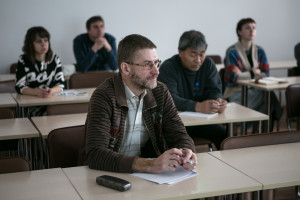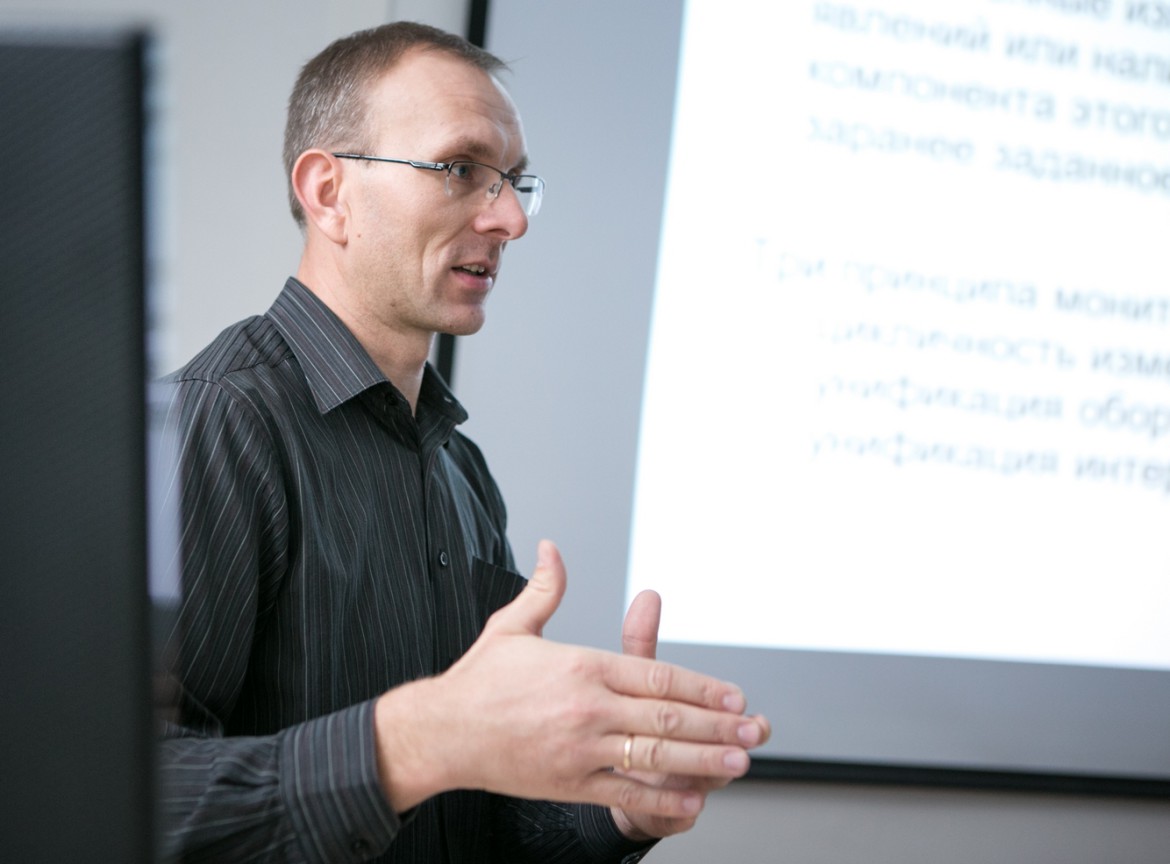Today, the study of phytodiversity is impossible without the use of interdisciplinary approaches based on classical data analysis and modern methods of obtaining and interpreting information. World experience of using these approaches and methods in the study and conservation of plants is reflected in the course of Marcin Nobis, professor at Jagiellonian University (Krakow, Poland). His lectures for Tomsk students and researchers took place this week at TSU.
– The main theme of my course is phytosociology, or phytosociology –  the branch of biology that connects knowledge of botany, geography, and ecology. I’m engaged in research of plant communities, taxonomy, vegetation dynamics, and distribution of plants. In the world for this work, scientists are actively using the most advanced methods of analysis and data collection. I tell in my lectures here about these methods, as well as the recent studies of European colleagues – says Marcin Nobis.
the branch of biology that connects knowledge of botany, geography, and ecology. I’m engaged in research of plant communities, taxonomy, vegetation dynamics, and distribution of plants. In the world for this work, scientists are actively using the most advanced methods of analysis and data collection. I tell in my lectures here about these methods, as well as the recent studies of European colleagues – says Marcin Nobis.
Meeting professors Nobis with Tomsk botanical school occurred a few years ago. Scientific interest in cereals, in particular to the feather grass, brought close Polish scientist to the Professor of TSU Marina Olonova and her graduate student Polina Gudkova. General subject has led to the fact that Polina had an internship at the Jagiellonian University, and the botanists of two countries issued a joint publication. Cooperation has become closer in the past year: Marcin Nobis for the first time arrived in Tomsk, where he read a series of lectures for botanists. Today, Dr. Nobis is a Professor of Tomsk State University.
 – In Tomsk, I managed to get acquainted with botanists of your university – with Professor Alexander Ebel, Andrei Pyak, Irina Gureeva, and others. I can say that the quality of the Tomsk botanical school is very high: there I found not only willingness for active cooperation, but also a good level of scientific research. So now we begin a large joint project on invasive and new to the different parts of Eurasia plants. These plants that have changed their usual habitat, we will be studying at all levels – from macromorphology to genetics. It is really a large-scale international project, to participate in and which I invite the young people – students, undergraduates, graduate students of TSU – said Marcin Nobis.
– In Tomsk, I managed to get acquainted with botanists of your university – with Professor Alexander Ebel, Andrei Pyak, Irina Gureeva, and others. I can say that the quality of the Tomsk botanical school is very high: there I found not only willingness for active cooperation, but also a good level of scientific research. So now we begin a large joint project on invasive and new to the different parts of Eurasia plants. These plants that have changed their usual habitat, we will be studying at all levels – from macromorphology to genetics. It is really a large-scale international project, to participate in and which I invite the young people – students, undergraduates, graduate students of TSU – said Marcin Nobis.
In 2015 Tomsk botanical school celebrated its 130 years of existence. Today, botanists of TSU work in different areas of the study of vegetation. Actual studies conducted in the herbarium of the University, at the Department of Botany, in laboratories. A relatively new trend of research are the study of invasive (foreign) plant in Siberia and development of methods of molecular genetic analysis.

